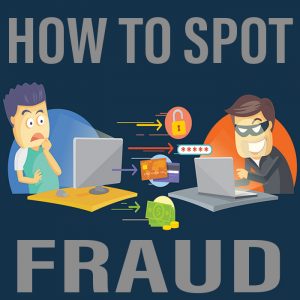
How to Reduce Your Digital Advertising Fraud Exposure
This holiday season, online advertising will reach all-time record levels. According to eMarketer, digital ad expenditures surpassed TV for the first time in 2016, and the gap will widen by roughly $10 billion once 2017 is complete.
Looking forward, digital spending will see double-digit growth each year, soaring from $83 billion in 2017 to $129.23 billion in 2021. However, the Association of National Advertisers reports that ad fraud cost businesses $7.2 billion in 2016, with some estimates as high as 15% to 20% of low quality exchanges being fraudulent. However, it’s not all bad news—2017 is actually projected to have less fraudulent ad activity, even as spend has gone up. Media buyers are learning how to reduce their clients’ exposure to fraud and increase these holiday conversions.
What Exactly is Digital Advertising Fraud?
Essentially, ad fraud is the deliberate practice of attempting to serve ads that have no potential to be viewed by a human user. The obvious tool for fraud is bots, i.e. non-human fake traffic that artificially inflates impression numbers.
But another aspect of ad fraud is viewability. A number of years ago, the out-of-home (OOH) industry recognized that raw traffic numbers were not an accurate indicator of how many people saw a billboard. They simply might not be looking at it. More robust research enabled the OOH industry to build a better understanding of impact based on consumer behavior, and they developed the Eyes on Impressions model.
Similarly, not every online impression recorded is necessarily in view long enough or even at all. Finally, unless you’re buying directly from publishers, you’re mostly likely using some sort of network, exchange or programmatic buying software that delivers ads on multiple websites and devices. It’s important for most brands that their messaging is not displayed on adult content, fake news, weapons/drugs content, etc.
What Can Be Done About Digital Advertising Fraud?
Any time your campaign has fraudulent impressions it reduces its effectiveness by reaching less of your target audience, similar to if your targeting is incorrect or if you’re paying too much. However, there are some smart and effective ways you can try and offset it.
Closely monitor your metrics
If there are suspiciously large changes in engagement, such as suddenly increased click through rates, it’s worth digging deeper. Regularly check your Google Analytics for unusual spikes on volume or unusual geographical sources, including overseas or out of your target. Beware of very high bounce rates or limited time spent on your website. If viable for your business, consider investing in a programmatic buying platform where you can check your campaigns in real time.
Be more discriminating with the partners used
Work only with companies that have invested in extensive proprietary anti-fraud technology, as well as third party verification. Seek partners that are highly ranked by the Interactive Advertising Bureau (IAB) and push to only buy from authorized sellers listed in a publisher’s ads.txt file.
Review the Quality of Partner Inventory
If your ads run around offensive or harmful content or are competing with too many other ads, you can put your brand’s reputation at risk by lowering the user experience (UX). Sites where ads are placed should have clear protocols on the number of ads allowed per page. A good rule of thumb is six or fewer ads per page for a better UX. Partner with exchanges that have strict standards and are committed to delivering the highest quality content possible for your ad delivery.
Create Your Own Attribution Models
At the end of the day, your campaigns are successful if they achieve your objectives. Every medium has some wastage and you negotiate your buys based on what you feel they are worth. As long as you know how many impressions you need to generate a set number of conversions then you can discover what you are prepared to pay—inclusive of any fraudulent traffic.